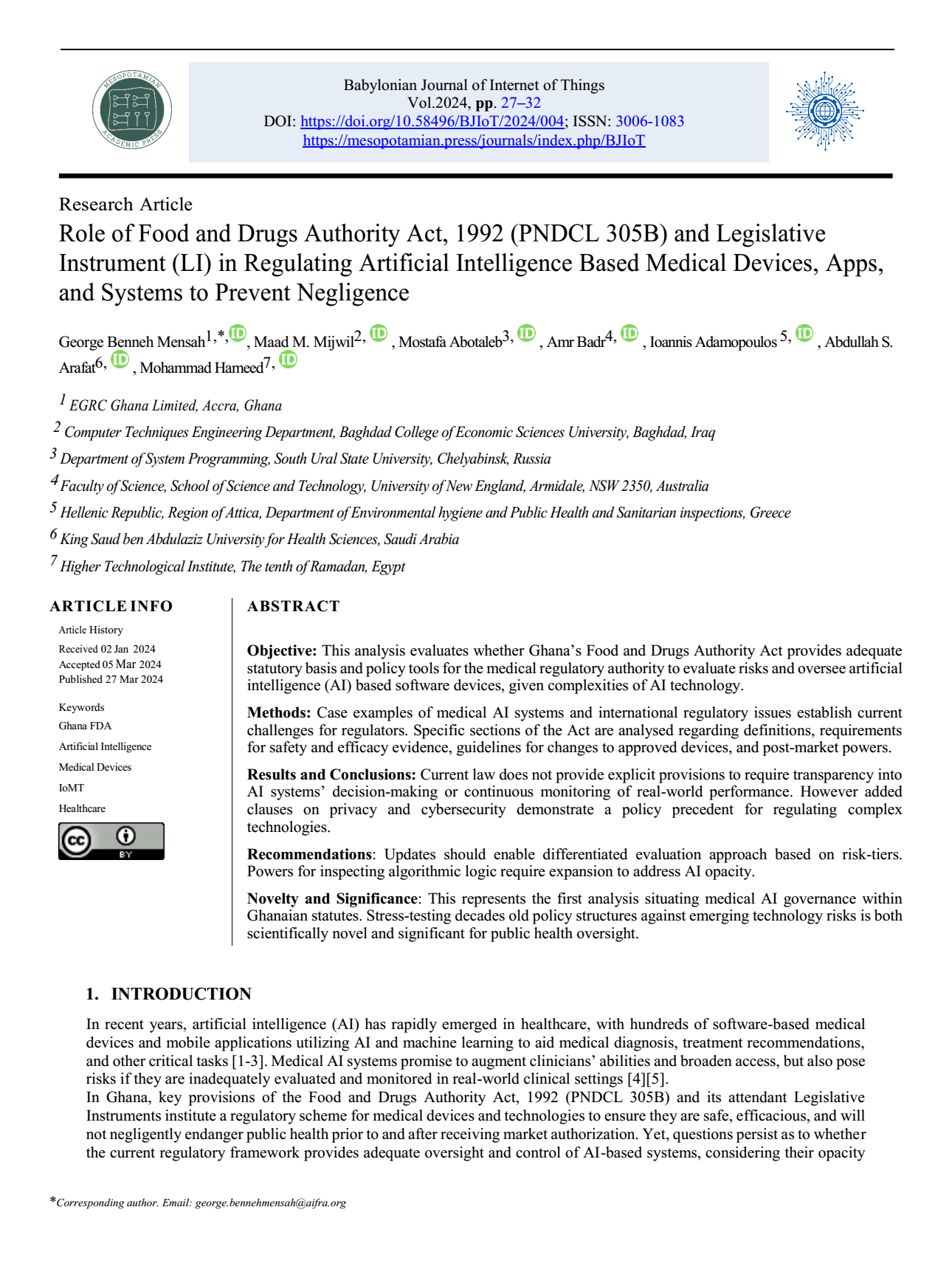Role of Food and Drugs Authority Act, 1992 (PNDCL 305B) and Legislative Instrument (LI) in Regulating Artificial Intelligence Based Medical Devices, Apps, and Systems to Prevent Negligence
Main Article Content
Abstract
Objective: This analysis evaluates whether Ghana’s Food and Drugs Authority Act provides adequate statutory basis and policy tools for the medical regulatory authority to evaluate risks and oversee artificial intelligence (AI) based software devices, given complexities of AI technology.
Methods: Case examples of medical AI systems and international regulatory issues establish current challenges for regulators. Specific sections of the Act are analysed regarding definitions, requirements for safety and efficacy evidence, guidelines for changes to approved devices, and post-market powers.
Results and Conclusions: Current law does not provide explicit provisions to require transparency into AI systems’ decision-making or continuous monitoring of real-world performance. However added clauses on privacy and cybersecurity demonstrate a policy precedent for regulating complex technologies.
Recommendations: Updates should enable differentiated evaluation approach based on risk-tiers. Powers for inspecting algorithmic logic require expansion to address AI opacity.
Novelty and Significance: This represents the first analysis situating medical AI governance within Ghanaian statutes. Stress-testing decades old policy structures against emerging technology risks is both scientifically novel and significant for public health oversight.
Article Details
Issue
Section

This work is licensed under a Creative Commons Attribution 4.0 International License.
